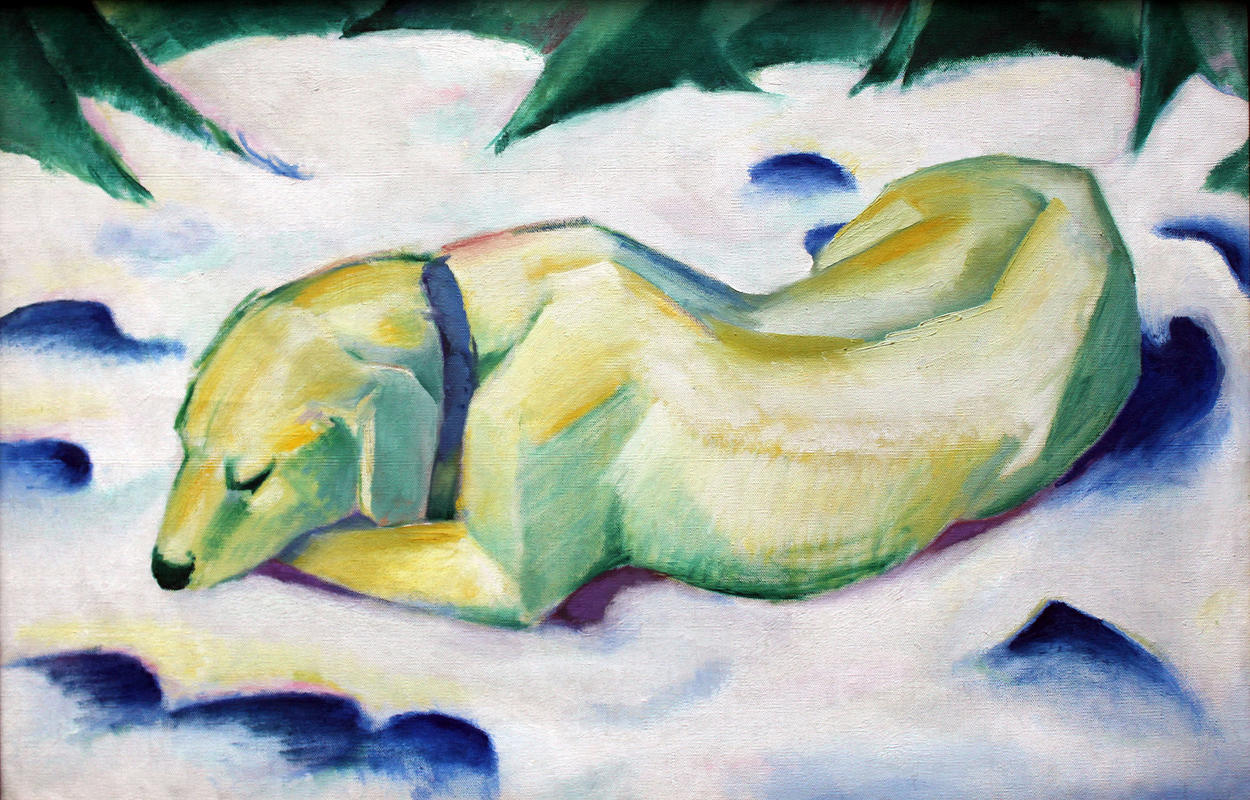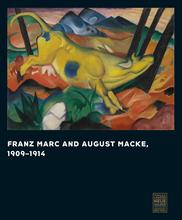More about Dog Lying in the Snow
- All
- Info
- Shop

Contributor
Dresden art historian Georg Swarzenski, head of the Städel Museum, jumped at the opportunity to purchase Marc's Dog Lying in the Snow in 1919 from Maria Marc, who had become the widow of Franz Marc a year earlier due to his service in World War I.
When the Nazis seized power, sixteen years later, they booted Swarzenski from his post, replacing him with a sufficiently "Aryan" former employee of his; like any government that seeks to reclaim a glorious national past by harsh policies, the Nazis were ultimately self-defeating, and nearly destroyed the magnificent German culture itself. This yellow dog wasn't "Aryan" enough for them, either (apparantly it spoke Yiddish), so they added it to a pile of seventy-seven paintings, almost 400 illustrations, and three sculptures, nearly all of which were acquisitions of Swarzenski, from the Städel. They called this work "degenerate," partly because Marc's artist friends, like Jawlensky and Kandinsky, were not of the right national pedigree. Five years later, they gave Swarzenski a house call and told him to write an essay on a painting. He escaped to the U.S., where he was a colleague of Einstein at Princeton, and then served as curator at the Museum of Fine Arts, Boston.
After the government confiscated the dog, they put it in the Niederschönhausen storage unit, before transporting it to the gallery of the notorious Theodor Fischer, in Lucerne, where Fischer auctioned it for foreign currency to aid the war effort. Just a couple of decades later, the Städel managed to buy it again, and they've kept it ever since. They also managed to repurchase Max Beckmann's Still Life with Saxophones.
For Marc and his Blue Rider friends, colors belong to a universal unseen order beyond the material world. If that sounds like metaphysical coffee shop talk, well, it is, and it's still as popular as it was in his time. The sitter for this portrait is Marc's Siberian shepherd dog, Russi, who the artist often used as a model. The yellow of the image is Marc's representation of what he called the "feminine principle, intuitive, positive, and sensual," while the blue is the otherworldly, harsh male principle. That sounds pretty German, but maybe it is universal too. Marc criticized the convention of art which placed animals in a landscape rather than "moving us into the soul of animal to guess its image." With some credulity, you are kind of located in Russi's loyal soul when you look at this one, especially if you're a dog person. The German-language readers of the Frankfurter Allgemeine Zeitung voted this work their favorite in the entire Städel Museum collection, and the museum placed it next to a curled-up tiger painting.
Sources
- Atlan, Eva, Raphael Gross, and Julia Voss. 1938: Kunst, Künstler, Politik. Göttingen: Wallstein, 2013.
- Kretzschmann, Julia. 'FRANZ MARCS „LIEGENDER HUND IM SCHNEE.“' StädelBlog, Nov. 20, 2015, https://blog.staedelmuseum.de/meisterwerke-des-staedel-marcs-liegender-….
- Walker, Neville, Christian Williams, and James Stewart. The Rough Guide to Germany. London: Rough Guides, 2009.
- "Zitate von Franz Marc." gute zitate, https://gutezitate.com/autor/franz-marc.













I enjoy this painting because of the colors that bring out the season of it, winter, I also like that it is able to show and depict that the dog is so relaxed where it is.